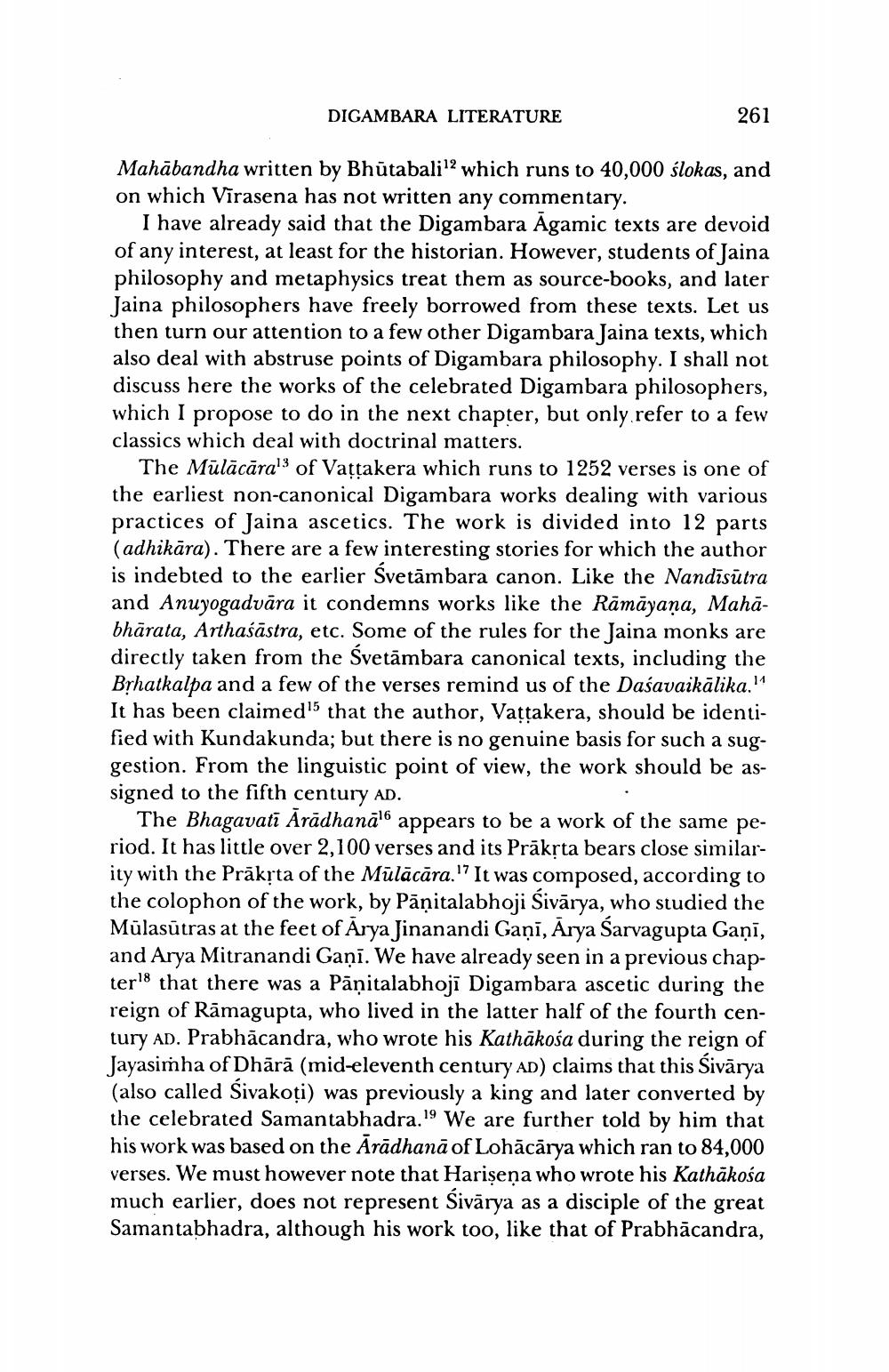________________
DIGAMBARA LITERATURE
261
Mahabandha written by Bhutabali12 which runs to 40,000 slokas, and on which Virasena has not written any commentary.
I have already said that the Digambara Āgamic texts are devoid of any interest, at least for the historian. However, students of Jaina philosophy and metaphysics treat them as source-books, and later Jaina philosophers have freely borrowed from these texts. Let us then turn our attention to a few other Digambara Jaina texts, which also deal with abstruse points of Digambara philosophy. I shall not discuss here the works of the celebrated Digambara philosophers, which I propose to do in the next chapter, but only refer to a few classics which deal with doctrinal matters.
The Mulācāra13 of Vaṭṭakera which runs to 1252 verses is one of the earliest non-canonical Digambara works dealing with various practices of Jaina ascetics. The work is divided into 12 parts (adhikāra). There are a few interesting stories for which the author is indebted to the earlier Svetambara canon. Like the Nandisutra and Anuyogadvāra it condemns works like the Rāmāyaṇa, Mahābharata, Arthaśāstra, etc. Some of the rules for the Jaina monks are directly taken from the Svetambara canonical texts, including the Bṛhatkalpa and a few of the verses remind us of the Daśavaikālika." It has been claimed 15 that the author, Vaṭṭakera, should be identified with Kundakunda; but there is no genuine basis for such a suggestion. From the linguistic point of view, the work should be assigned to the fifth century AD.
The Bhagavati Ārādhanā16 appears to be a work of the same pe
riod. It has little over 2,100 verses and its Prākṛta bears close similarity with the Prakṛta of the Mulācāra." It was composed, according to the colophon of the work, by Pāṇitalabhoji Śivārya, who studied the Mülasūtras at the feet of Arya Jinanandi Gaṇī, Arya Śarvagupta Gaṇī, and Arya Mitranandi Gani. We have already seen in a previous chapter18 that there was a Pāņitalabhoji Digambara ascetic during the reign of Rāmagupta, who lived in the latter half of the fourth century AD. Prabhācandra, who wrote his Kathakośa during the reign of Jayasimha of Dhārā (mid-eleventh century AD) claims that this Śivarya (also called Śivakoți) was previously a king and later converted by the celebrated Samantabhadra. 19 We are further told by him that his work was based on the Aradhana of Lohācārya which ran to 84,000 verses. We must however note that Hariṣena who wrote his Kathakosa much earlier, does not represent Śivärya as a disciple of the great Samantabhadra, although his work too, like that of Prabhācandra,




